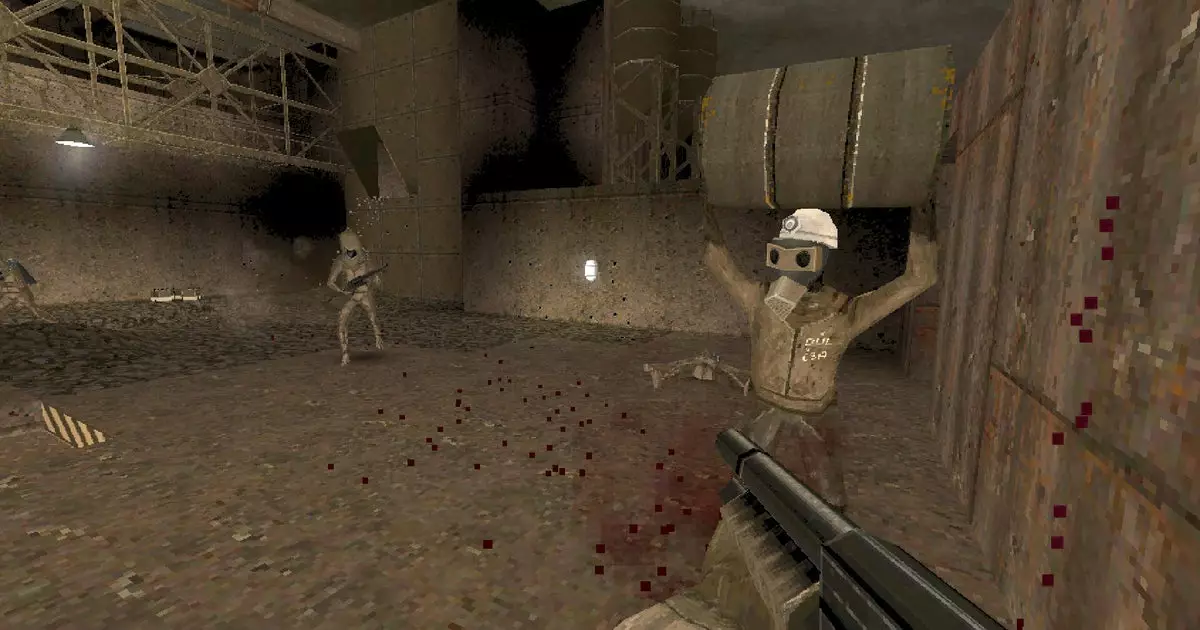When it comes to video game development, few experiences overshadow the satisfaction of delivering a polished product. However, developers sometimes find themselves in the pragmatic and messy world of bugs—particularly those that perplex players. The recent saga surrounding the indie shooter, Hrot, showcases the challenges enthusiasts face when a seemingly minor issue turns into a significant concern. This analysis delves into the curious case of the barking dogs within Hrot, the responses from the developer, and how this reflects on both the experience of gaming and the nature of indie development.
Over a year after the game’s launch, players were shocked to discover that certain canine characters in Hrot exhibited a bizarre behavioral quirk: they were caught in an unending and intolerable barking loop. This issue was particularly pronounced for users on Linux systems, highlighting a significant oversight in the game’s programming. Developer Spytihněvě acknowledged the complaints, noting the oversight around the barking issue: “A lot of people have complained about some barking,” he stated. This comment emphasizes not only the persistent nature of the bug but also the diverse reactions from the community, where some players viewed the endless yapping as a minor irritation, while others found it unbearable.
The pervasiveness of the bug had a tangible impact on player experience. Although the dogs were intended to bring life to the game, the incessant barking overshadowed their charm. Even humorous attempts to silence the pups—such as feeding them until they vomit—failed to resolve the matter permanently. Such a quirky mechanic raises questions about the line between engaging gameplay and unintended annoyance. Was this a clever subversion of typical gamer expectations, or simply a neglected fault in the design?
The world of Hrot is set against a backdrop of political satire and surrealism, drawing players into a distinctly unique narrative. The game offers sequences filled with historical references, such as interactions with the likeness of Czechoslovakia’s first communist dictator, Klement Gottwald. It juxtaposes moments of highbrow commentary with ludicrous scenarios, including a character shooting a horse clad in a gas mask. This delightful absurdity formed the crux of what many players enjoy about Hrot, and yet the barking bug ultimately distracted from these intricacies.
Rick, a reviewer, found the charm of Hrot lay within its surrealist settings and deep narrative. His reflections shed light on the game’s juxtaposition of societal critique and bizarre comedic elements. It begs the question: how much do game-breaking bugs detract from an otherwise engaging narrative? This scenario highlights the vulnerability of indie developers who, despite their best intentions, occasionally miss the mark.
The barking dogs represent more than just a programming mishap; they encapsulate the pressures of indie development and the rapidly shifting landscape of gaming technology. With the gaming scene continually evolving, developers often navigate uncharted territory filled with both modern expectations and nostalgia for classic gameplay. Spytihněvě’s post-release reflections reveal an eagerness to learn from the feedback: “It’s a shame that such a bug survived there for almost 2 years,” he admitted, admitting to a certain vulnerability that resonates with many indie creators.
Furthermore, the fallout from Hrot demonstrates the profound impact player feedback has on both developers and the gaming landscape. Post-launch patches have become a standard for addressing such issues, ensuring that the gaming experience aligns with player expectations. For Spytihněvě, this serves as motivation not only for future projects—such as his new venture into the real-time strategy genre with Shrot—but as an opportunity to understand the nuances of bringing playful worlds to life.
While Hrot may grapple with its interruptions from barking canines, the episode shines a light on the complexities of indie development, player engagement, and narrative depth. It serves as a reminder that every distraction—no matter how bizarre—offers an opportunity for growth and connection within the gaming community. When examining the broader implications of Hrot’s barking dogs, one can appreciate the intricate dance of design, storytelling, and player experience that continues to evolve in the gaming sphere.


Leave a Reply